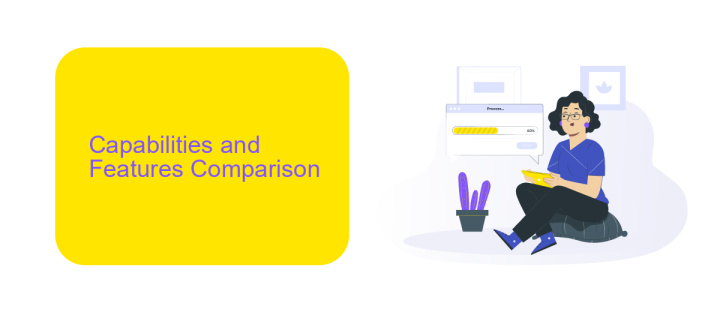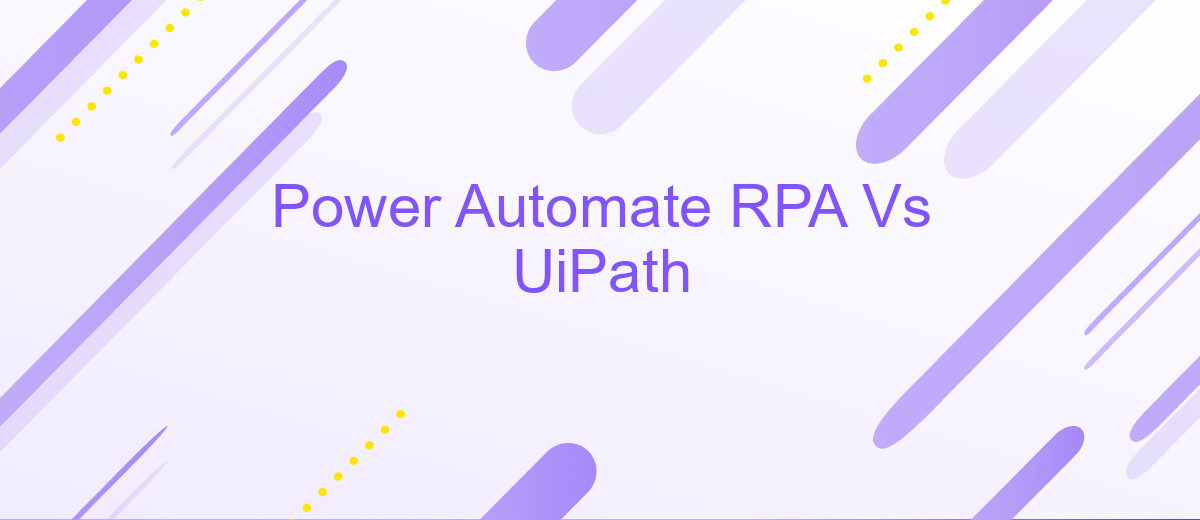Power Automate RPA Vs UiPath
In the rapidly evolving world of automation, choosing the right Robotic Process Automation (RPA) tool is crucial for business efficiency. This article delves into a comparative analysis of two leading RPA platforms: Power Automate and UiPath. By examining their features, capabilities, and user experiences, we aim to provide insights that will help organizations make informed decisions on their automation journey.
Introduction
In the ever-evolving landscape of automation, two prominent tools have emerged as leaders: Power Automate RPA and UiPath. Both platforms offer robust solutions for automating repetitive tasks, enhancing productivity, and reducing human error. However, choosing the right tool for your organization can be challenging, given their unique features and capabilities.
- Power Automate RPA: Seamlessly integrates with Microsoft products and offers a user-friendly interface.
- UiPath: Known for its extensive capabilities and flexibility in automating complex processes.
Understanding the differences and similarities between these tools is crucial for making an informed decision. Additionally, integrating these automation solutions with other services, such as ApiX-Drive, can further streamline workflows and enhance efficiency. ApiX-Drive offers a simple way to set up integrations, ensuring a smooth and cohesive automation experience. This section will delve into the key aspects of Power Automate RPA and UiPath, helping you determine which tool best suits your needs.
Capabilities and Features Comparison

Power Automate RPA and UiPath offer robust capabilities for automating business processes, but they differ in certain features. Power Automate RPA integrates seamlessly with Microsoft’s suite of products, providing a user-friendly interface that is ideal for organizations already using Office 365 and other Microsoft services. It excels in automating simple to moderately complex workflows and offers extensive cloud-based automation capabilities. On the other hand, UiPath is known for its advanced features, including AI and machine learning integrations, which make it suitable for more complex and large-scale automation projects. UiPath also provides a more extensive set of pre-built automation templates and a robust community for support.
When it comes to integration capabilities, both platforms offer extensive options, but UiPath stands out with its wide range of third-party integrations. Power Automate RPA, however, can be enhanced with services like ApiX-Drive, which facilitates seamless integration with various applications, enhancing its versatility. Both platforms offer strong security features, but UiPath's enterprise-grade security and compliance options are particularly noteworthy. Ultimately, the choice between the two will depend on the specific needs and existing infrastructure of the organization.
Pricing and Licensing Models

When comparing the pricing and licensing models of Power Automate RPA and UiPath, it's essential to consider the flexibility and scalability each platform offers. Power Automate RPA provides a subscription-based pricing model, which includes different plans tailored to various business needs. This allows organizations to select a plan that aligns with their automation requirements and budget constraints.
- Power Automate RPA: Offers per-user and per-flow plans, ensuring businesses can scale their automation efforts as needed.
- UiPath: Provides a more traditional licensing model with options for named user licenses, concurrent user licenses, and unattended robot licenses, catering to diverse organizational demands.
Both platforms also offer additional services and integrations to enhance their automation capabilities. For instance, services like ApiX-Drive can be utilized to streamline integrations between various applications, further optimizing the automation processes. By understanding the unique pricing and licensing models of each platform, businesses can make informed decisions that best suit their operational goals.
Advantages and Disadvantages

When comparing Power Automate RPA and UiPath, it's essential to weigh their advantages and disadvantages. Power Automate RPA is well-integrated with Microsoft products, making it a natural choice for organizations already using Office 365. It offers a user-friendly interface and is cost-effective, especially for small to medium-sized businesses. On the other hand, UiPath excels in scalability and advanced functionalities, making it suitable for larger enterprises with complex automation needs.
However, both platforms have their downsides. Power Automate RPA may lack some of the advanced features and flexibility that UiPath provides. Conversely, UiPath can be more expensive and may require a steeper learning curve, particularly for users unfamiliar with automation technologies.
- Power Automate RPA: Easy integration with Microsoft products, cost-effective, user-friendly.
- UiPath: Highly scalable, advanced features, suitable for complex automation tasks.
- Power Automate RPA: Limited advanced functionalities.
- UiPath: Higher cost, steeper learning curve.
For businesses looking to streamline their integration processes, services like ApiX-Drive can be invaluable. ApiX-Drive simplifies the connection between different applications, making it easier to automate workflows regardless of the platform you choose. This can significantly enhance the efficiency and effectiveness of your automation strategy.
Conclusion
In conclusion, both Power Automate RPA and UiPath offer robust solutions for automating repetitive tasks and streamlining business processes. Power Automate RPA is well-integrated with Microsoft's ecosystem, making it an excellent choice for organizations already utilizing Microsoft products. On the other hand, UiPath provides a more comprehensive set of features and greater flexibility, making it suitable for a wide range of industries and complex automation needs.
When it comes to integration capabilities, services like ApiX-Drive can further enhance the automation experience by seamlessly connecting various applications and systems. This can be particularly beneficial for businesses looking to create a more cohesive and efficient workflow. Ultimately, the choice between Power Automate RPA and UiPath will depend on specific organizational requirements, existing infrastructure, and the complexity of the tasks to be automated.
- Automate the work of an online store or landing
- Empower through integration
- Don't spend money on programmers and integrators
- Save time by automating routine tasks
FAQ
What is the primary difference between Power Automate RPA and UiPath?
Which platform is more suitable for small to medium-sized businesses?
Can I integrate Power Automate RPA and UiPath with other third-party applications?
Which platform offers better support and community resources?
How do the licensing costs compare between Power Automate RPA and UiPath?
Time is the most valuable resource for business today. Almost half of it is wasted on routine tasks. Your employees are constantly forced to perform monotonous tasks that are difficult to classify as important and specialized. You can leave everything as it is by hiring additional employees, or you can automate most of the business processes using the ApiX-Drive online connector to get rid of unnecessary time and money expenses once and for all. The choice is yours!


